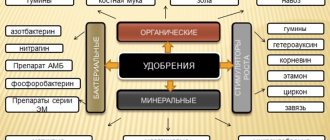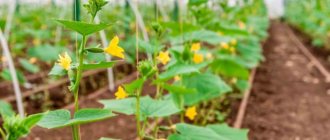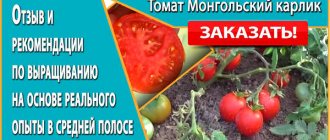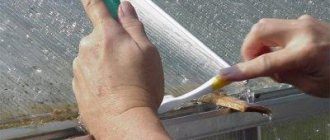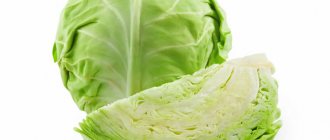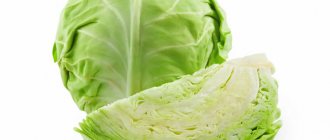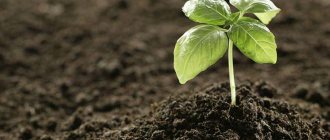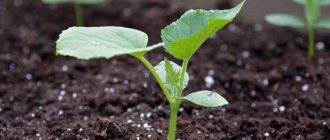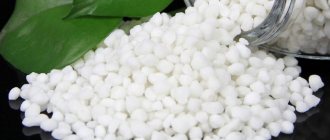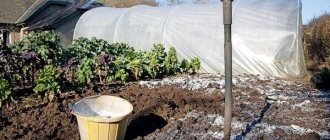Some gardeners take the ideas of organic farming too literally and therefore refuse to use inorganic substances. But the effectiveness of mineral fertilizers and their indispensability in growing crops cannot be underestimated.
Mineral fertilizer is a substance consisting of inorganic compounds that contain nutrients necessary for plants to develop normally. Mineral fertilizers saturate the soil with phosphorus, nitrogen, potassium, calcium and other macro- and microelements, helping to accelerate the ripening of fruits. If you are thinking about what mineral fertilizers to use in your garden, we suggest first understanding their classification.
What are mineral fertilizers?
Application of mineral fertilizers
For example, a wide selection of fertilizers and seeds can be viewed at: svg-group.com.ua .
Mineral fertilizers are preparations consisting of useful elements that garden crops need for normal development and ripening of the crop. People call such drugs chemical, although this is not entirely true. In their production, natural minerals mined industrially are used. Only a small proportion of artificial additives is acceptable.
Mineral fertilizers today are even more popular than organic fertilizers. And there are many reasons for this.
- Low cost. The price of minerals is insignificant compared to organics.
- Small doses of the drug are usually used for treatment. This allows you to buy a small bag of the substance, rather than ordering a whole car, as is the case with humus, to fertilize the soil.
- It is not difficult to get mineral fertilizer. They are sold in any gardening store, in markets and on the Internet, there are more than enough similar offers for sale!
- Mineral fertilizers are easily selected for a specific type of soil, crop and phase of their growing season.
Minerals are used exclusively in the dosage recommended by the manufacturer. If you overfeed the plants, they may die![/su_box]
In terms of effectiveness, minerals are in no way inferior to organic matter if used correctly. But it is very important to maintain concentration when diluting the substance, because the abundance of such a drug can harm or even completely burn fertilized plants!
Home remedies for indoor plants
Many gardeners use various components to feed indoor flowers, for example, coffee grounds, tea leaves, but this is more harmful than beneficial.
Using crushed eggshells provides excellent drainage and works great to loosen the soil.
Household ingredients popular with many gardeners are essentially organic, so they must be used with caution.
The addition of additional nutrients plays a very important role for indoor flowers. Timely feeding is vital for them and even much more than for outdoor plants. It is important to use fertilizers correctly to avoid negative consequences.
Types of mineral fertilizers
Also check out these articles
- Angelica honey and its properties
- Cucumber varieties for the Urals
- Breed of chickens Hisex Brown
- Plum compote
Mineral fertilizers may contain 1, 2, 3 or more basic substances in their composition. The main elements are nitrogen, potassium and phosphorus. At least one of these elements is present in any of the mineral supplements. Auxiliary components are: sulfur, manganese, magnesium, calcium and other important minerals.
Mineral fertilizers photo
There are only four main types that can be found in any gardening store.
- Nitrogen substances, which consist predominantly of nitrogen.
- Phosphorus mineral fertilizers are made from phosphorus and may contain some other elements.
- Potassium preparations include potassium salts and microadditives.
- Complexes – combine many components in equal or different proportions.
It is mineral fertilizer complexes that gardeners use most often, because they allow you to replenish not only one specific mineral, but several at once.
Vermicompost
This organic fertilizer is also used for growth. It is available in liquid and granular form. Unlike mullein and manure, humus does not have a strong odor, does not require sterilization, and is a product of the processing of special worms. But feeding it will allow you to qualitatively improve the appearance of your home flowers.
A substrate consisting of vermicompost, soil from the garden, sand in a ratio of 1:4:1 will help for many flowerpots that need replanting. In general, you need to follow the instructions on the bottle or package of the product. Photos of this fertilizer for indoor flowers can be seen on the Internet. Some gardeners prepare it themselves.
Nitrogen fertilizers
Photo nitrogen fertilizer
Nitrogen-based fertilizers are usually used in early spring. After all, it is nitrogen that is necessary for a lot of healthy greenery to appear on crops. In addition, this substance helps sprouts appear faster during sowing of seeds.
Nitrogen fertilizers are quite dangerous. Some of them, such as ammonium nitrate, are explosive, but in addition, if they are used in too high concentrations, a lot of nitrates can be deposited in crops.
The most common types of nitrogen fertilizers are: “urea”, “ammonium sulfate”, “ammonium water”, “sodium nitrate”, “ammonium nitrate”, “calcium sulfur”. The application rates of nitrogen preparations depend on the period of the year, as well as the type of crop. Detailed instructions are always indicated on the label of the fertilizer bag.
Strawberries, apple trees, tomatoes, potatoes and cucumbers react most actively to a lack of nitrogen in the soil. If there is not enough nitrogen in the soil, they may begin to lose the color of the leaves, stop growing, and the leaves will not grow to normal sizes. In one case or another, a certain type of fertilizer is used. For example, saltpeter increases the growth of beets, urea acidifies the soil, ammonium nitrate accelerates the growth of tomatoes, cucumbers, cabbage and herbs.
Potash fertilizers
We recommend reading our other articles
- Strawberry variety Tago
- How to choose quality pet food: types and tips
- Electric grill: features, choice and types
- Winter wheat varieties
Potash fertilizers predominantly contain potassium salt. Other additives, if present, are in minimal quantities. Potash fertilizers are recommended for sandy areas, although in principle they are applicable to any soil.
Fertilizer potassium chloride photo
- “Potassium sulfate” (“potassium sulfate”) is suitable for use at any time of the year and for any crops. It is quite safe, and yet it should be diluted only according to the instructions. Application rates are up to 30 g per square meter, although the amount depends on the soil or crop that needs to be fed.
- “Potassium chloride” contains chlorine and this is its main disadvantage. It is usually applied before winter so that during the cold period the chlorine disappears and only useful fertilizer remains in the soil. It is also worth noting that this type of minerals is not used on acidic soil, because the acidity will only increase after it. Approximately 25 g of fertilizer is applied per square plot. But more detailed standards can be read on the label.
Root vegetables and cereals respond best to the addition of potassium as a top dressing. But this substance is necessary for any fruit and berry crops!
Phosphorus fertilizers
Phosphorus fertilizers contain primarily phosphorus (at least 20%). It is obtained from apatites and phosphorites found in nature. Phosphorus preparations can be used on any type of soil. Some use them before winter, others in spring and summer.
Photo shows phosphorus fertilizers
Phosphorus fertilizers will be well absorbed only if there is enough nitrogen and potassium in the soil!
Among the well-known phosphorus mineral fertilizers it is worth mentioning:
- “Superphosphate” is a popular preparation widely used for shrubs, trees, vegetables and berries.
- “Double superphosphate” is considered even better than superphosphate. It does not contain CaSO4, which is practically useless for crops, has almost double the amount of phosphorus and therefore is consumed much more economically.
- “Phosphorite flour” is a simple, affordable type of phosphorus fertilizer. It is always used on acidic soil, because it can reduce acidity. Can be used for any crops and at any period of their development.
Fertilizer application rates are always indicated on the packaging. It is not recommended to deviate from the proposed concentrations, especially if it is not the land that is fertilized for the winter, but the plants during the development period. An abundance of phosphorus fertilizer can lead to burns on the roots or stem.
Complex-mixed
Mostly complex mixed types are liquid or powdered mineral fertilizers, which are obtained by combining several simple components in powder form. Then a solution of ammonia, sulfur or nitrogen is added. The most widely used options are those with ammonium nitrate, phosphates and potassium chloride.
Complex mixed types are similar in composition to complex fertilizers, and their cost is approximately identical. The most expensive options contain superphosphate. The method has several advantages:
- you can prepare various mixtures of substances;
- mixing can be done anywhere;
- the formula of the substance is selected for different types of soil;
- wide possibilities of use.
Complex mixed types include compositions of nitrophos and nitrophos, which are mined in the process of transforming phosphorite or apatite. They are used before sowing and are also placed in holes.
During the manipulations, carbonammophos is obtained, which is a compound of nitrogen and ammonia. The use of these substances is relevant in large enterprises that need to process large areas of land.
Complex fertilizers
Feedings made up of several basic elements are called complex. Manufacturers make double (nitrogen-potassium, potassium-phosphorus and nitrogen-phosphorus) and triple (nitrogen-phosphorus-potassium) complex fertilizers. But which ones are highly economical and efficient?
Application of complex mineral fertilizers
- "Azofoska" is a granular, non-toxic drug. Contains nitrogen, phosphorus and potassium. Most often used to increase the fertility of the land or the growth vigor of a particular crop. Keeps for a very long time.
- “Nitrophoska” is a simple substance that contains nitrogen, potassium and phosphorus.
- “Ammophos” is a phosphorus-nitrogen substance in a ratio of 52:12, respectively. This species is quickly adopted by various plants.
- NPK (nitrogen-phosphorus-potassium fertilizer) is available in the form of small granules. This is a complex substance suitable for different plants at any period of development. It is quickly absorbed, effective and economical.
- "Nitroammofoska" universal fertilizer. It contains a lot of nitrogen, potassium, phosphorus, and sulfur.
- "Diammophos" is a phosphorus-nitrogen fertilizer in a ratio of 20:51. It breaks down quickly in water and is suitable for any period of plant development. Contains virtually no impurities.
Advantages and disadvantages
Summer residents who have a negative attitude towards the use of inorganic fertilizers are partly right: mineral fertilizers are “chemicals”, and if you thoughtlessly add additives, you can get the opposite effect.
But still, one should not deny the advantages that mineral fertilizers have:
- the ability to get quick results;
- ease of use;
- “work” in cold soil and at sub-zero temperatures;
- economical (requires much less than organics);
- ease of transportation.
Among the disadvantages, they note the need to strictly take into account dosages, since if a given amount is exceeded, soil and water bodies can be polluted, crop growth can be stopped, and toxic compounds can accumulate in fruits.
Microfertilizers
Microfertilizers usually contain a whole range of useful elements. They are available in liquid, crystal or powder form, which can be dissolved during use. Their advantage is that they are absorbed very quickly, almost 100%, and are also able to protect plants from pests or diseases (some types). The main drawback is the price.
Microfertilizer complex photo
- "Sizam" is recommended for cruciferous vegetables. It increases the yield and protects crops from pests.
- "Master" is suitable for flowers. It contains a lot of Zn, Cu, Fe, Mn.
- "Oracle" is suitable for berry bushes and plants, as well as for lawns and flowers. It contains many nutrients, including etidronic acid, which regulates the distribution of fluid in plant cells.
Microfertilizers also include “copper sulfate”, “boric acid”, “pyrites”, “ammonium molybdic acid” and “borax”.
Microfertilizers are never used en masse for the entire garden, but only specifically for a particular crop. They also usually do not treat the soil, but only feed already growing plants.
Basic Rules
All types of indoor plants need to be fed. Basically, even a large container briefly solves the problem of lack of nutrients. Therefore, you should feed the plants in a timely manner with suitable fertilizers.
Florists determine the lack of nutrients in plants by external signs:
- Slow plant growth.
- Weakened, thin stems and pale leaves that turn yellow and fall off after a short time.
- There are practically no inflorescences.
- The flower practically does not resist various diseases.
Application of mineral fertilizers
All kinds of mineral fertilizers are used to fertilize the soil (before winter or before planting) and as spring and summer feeding of various garden plants. Each individual application has its own nuances, but there are also general principles that should be followed.
The use of mineral fertilizers is the key to further increasing productivity
- Only fresh fertilizer can benefit plants. If the expiration date has already passed, the sachet with the drug should be thrown away. Its use may harm the soil or crops.
- Use mineral fertilizers strictly according to the instructions. Depending on the crops for which they are used and the growing season, dosages may vary significantly.
- It is recommended to store fertilizers in airtight packaging, especially those containing nitrogen, because this element is volatile.
- Fertilizers are diluted in a container specially designated for this purpose. You cannot eat food from cups or plates that have contained chemicals, even after washing - this is very dangerous!
All work on dilution and use of mineral fertilizers is recommended to be carried out with gloves and carefully so that the drug does not get into the eyes or other mucous membranes.
- If fertilizers are used to improve the quality of the soil, it is worth first finding out what the composition and acidity of the soil is. In this way, you can avoid mistakes and actually improve, and not worsen, the composition of the soil, because many fertilizers acidify the soil, while others can increase the amount of a certain element excessively - this is also not good.
- Sometimes, if fertilizers have not been used for a long time, they can cake and appear in one lump. This drug can be used if the expiration date has not expired, but before doing so, you should knead it so that it is free-flowing.
- Granular fertilizers are considered the most practical and easy to use. They are applied for digging, in dry form, and perfectly nourish the soil and plants, which are then planted in it.
- Sometimes mineral substances interfere with organic substances. There is nothing wrong with this, but in this case it is necessary to reduce the dose of minerals by at least 2 times.
- Mineral fertilizers are usually applied at the root. Only in some cases is spraying on top of the green mass allowed. This must be taken into account and this or that fertilizer must be used correctly. If you water plants with minerals from above from a watering can, all the green part can burn out in just a few hours!
- Experts recommend alternating mineral fertilizers used to increase soil fertility.
The use of mineral fertilizers usually does not cause difficulties. They are easy to work with, high efficiency, the main thing is to follow the safety rules, dosage and method of applying the product in a particular case.
Feeding period
Various types of indoor plants need additional nutrients from early spring to late autumn. In winter, there is no need to feed indoor flowers, since the life processes of plants are slowed down.
Before feeding the plants, you need to thoroughly moisten the soil in advance, and only after that you can add nutritional compounds and water again. This will help avoid damage to the roots.
When choosing nutritional compositions for feeding various types of indoor flowers, you should take into account that they are different for flowering and deciduous plants. Therefore, you should consult with a specialist which fertilizers are best to use for feeding different types of indoor flowers.
It is strictly not recommended to fertilize sick plants affected by harmful insects and immediately after transplantation.

